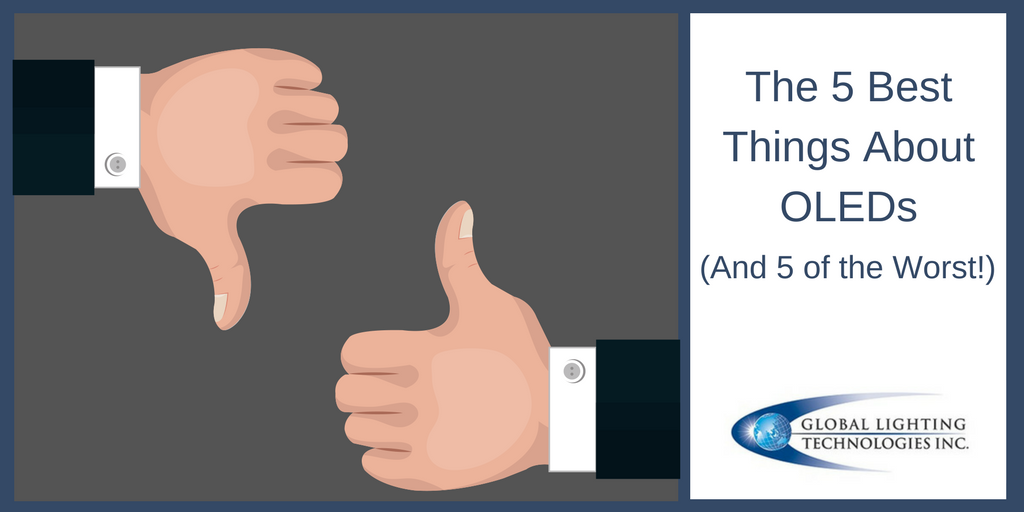
The Pros and Cons of OLEDs
Are OLEDs (Organic Light Emitting Diodes) the right choice for your custom lightguide solution? As with any consideration, there are both advantages and potential disadvantages. Global Lighting Technologies has a great deal of experience reviewing OLEDs, and here, we’re sharing some of that expertise to showcase the best, and yes, the worst, side of this technology.
Five Great Benefits to OLEDs
- Contrast Ratio: OLEDs are able to produce a far greater contrast ratio than traditional LED and LCD screens. Great contrast is achieved in part because there’s no “always on” backlight.
- Increased Viewing Area: One of the major drawbacks of a traditional LED or LCD is that when not viewed head on from the center, brightness, color, and clarity quickly decrease. With OLEDs though this isn’t the case, offering a far greater and wider viewing area to each side from the center of the screen.
- Higher Uniformity: Higher overall uniformity of brightness and illumination is also made possible with OLEDs. That’s because it’s not reliant on light from individual LEDs or tubes, but rather an LED for each color and pixel.
- Better Picture Quality: An overall improved picture quality can be achieved with OLEDs in comparison to LEDs and LCDs. This is thanks to the above traits of higher contrast ratios, uniformity, and brightness, along with some of the capabilities that make this happen, such as utilizing color filters.
- Less Wash Out: Another problem with traditional LCD screens it that outside light easily produces a “wash out” effect. However, OLEDs offer lower ambient reflectivity, keeping more of that outside light from interfering.
The 5 Worst Things About OLEDs
- Color Saturation: Bright OLED displays may have some difficulty in maintaining color saturation.
- Decreased Energy Efficiency: Those improvements to brightness and picture quality are wonderful, but they do come with a downside in the form of decreased energy efficiency.
- Shorter Life Expectancy: One of the huge upsides to traditional LCDs, particularly after the technology has been improved so much over the years, is their life expectancy. OLEDs have not yet matched that same shelf life.
- Total White: While contrast levels can be enhanced with OLEDs, the “total white” effect is more difficult to be properly maintained.
- Cost: OLEDs are simply a more expensive choice than LEDs and LCDs. Every business always needs to weigh the bottom line price versus the enhanced quality it’s able to offer.
Whether OLEDs are right for your company’s project depends on your specific needs and budget. To learn more about getting started with a custom lightguide solution, contact us here or call 440-922-4584 to speak with a representative. The GLT team will be happy to answer any questions about the potential pros and cons of OLEDs and whether or not they may be the ideal choice.